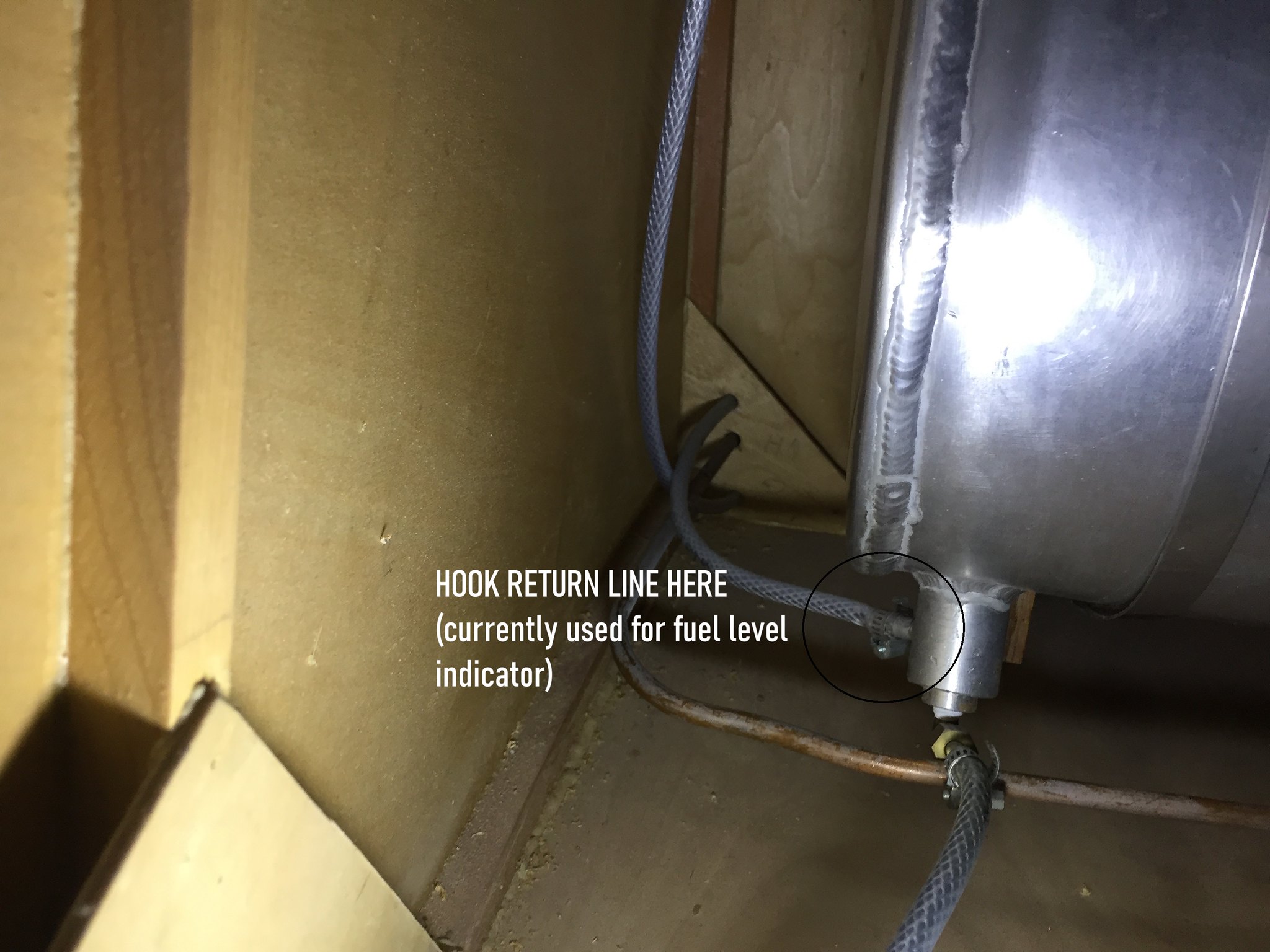Fuel return line design obstacle
Hi everyone,
this is my first post on this forum, I am in a team of french engineering students that has been building a Jodel D185 ultralight aircraft for many years now.
It has been equipped with a 80hp 912 UL (brand new), but some parts of the installation weren't very well thought out by the previous teams.
One of the main issues I am facing is that the fuel tank, that is cylindrical and sits behind the pilot and copilot, wasn't originally designed to have a return line, because the plane was designed for another engine, so there is not a port specifically designed to be used for a return line.
The thing is, since the airplane is made of wood and cloth nothing can be welded in situ, and removing the tank would take days of our time and would be risky since the wings have to come off and are not designed to be taken off every other day, and the risk to rip the covering is high.
I have seen people use these riveted return line bungs on performance cars, but I am scared that they wouldn't work very well on the curved surface of the tank.
One of the options I have is to use the vent line right next to the fill cap, but that would mean drilling the fill cap and I wouldn't want the return fuel to drip out of the cap and spray all over the side of the airplane, damaging the covering.
Another option I have is to have the return line hooked up to the bottom of the tank, basically tee'd off the purge lines. The concern I have with this is that the fuel wouldn't be pressurised enough to overcome the hydrostatic pressure of the fuel already in the tank.
There is let's say about 0-50cm of height from bottom to top of tank so about 0-3800 Pascals or 0-0.55 psi in freedom units of back pressure, that would vary with the amount of fuel in the tank and the orientation of the aircraft. I'm not quite sure the restrictor will even be able to push the fuel to the tank.
Perhaps I'm overthinking this and my reasoning is wrong but I would like to get this done right the first time around and not have to worry about fuel supply issues.
I am unsure about the diameter of the restrictor but I can check later in case someone needs to know.
I inserted pictures to illustrate the different options I am considering :


(for anyone wondering, all of these fuel lines are not the final product and will be replaced with aluminum hardline even before fuel is inserted and the engine is started)
Any opinions or other ideas ?
Thanks for reading





